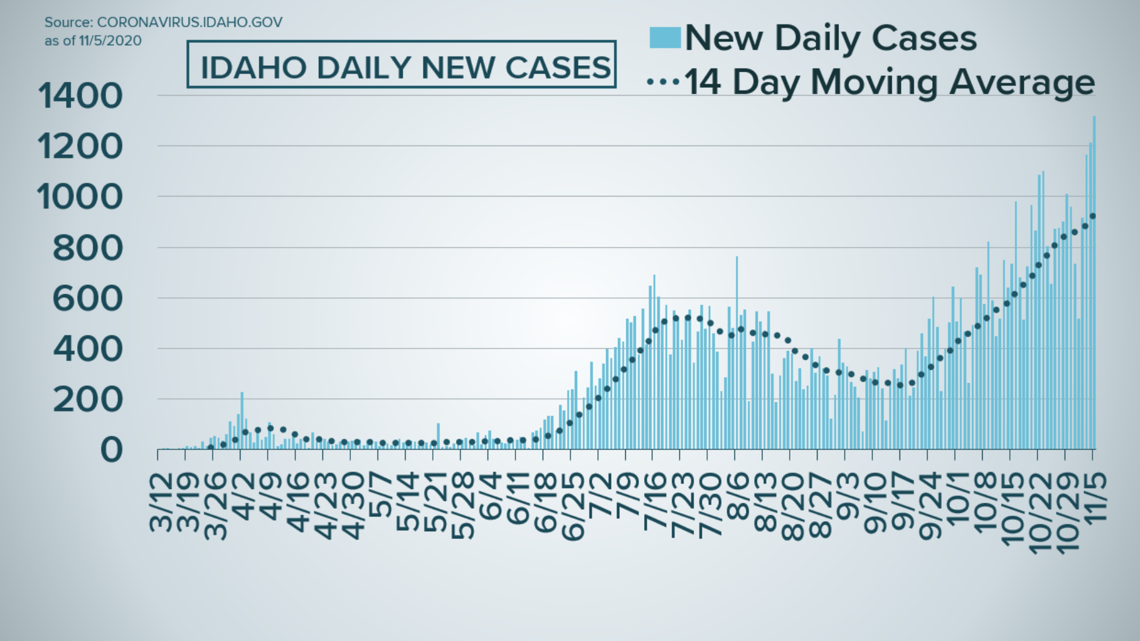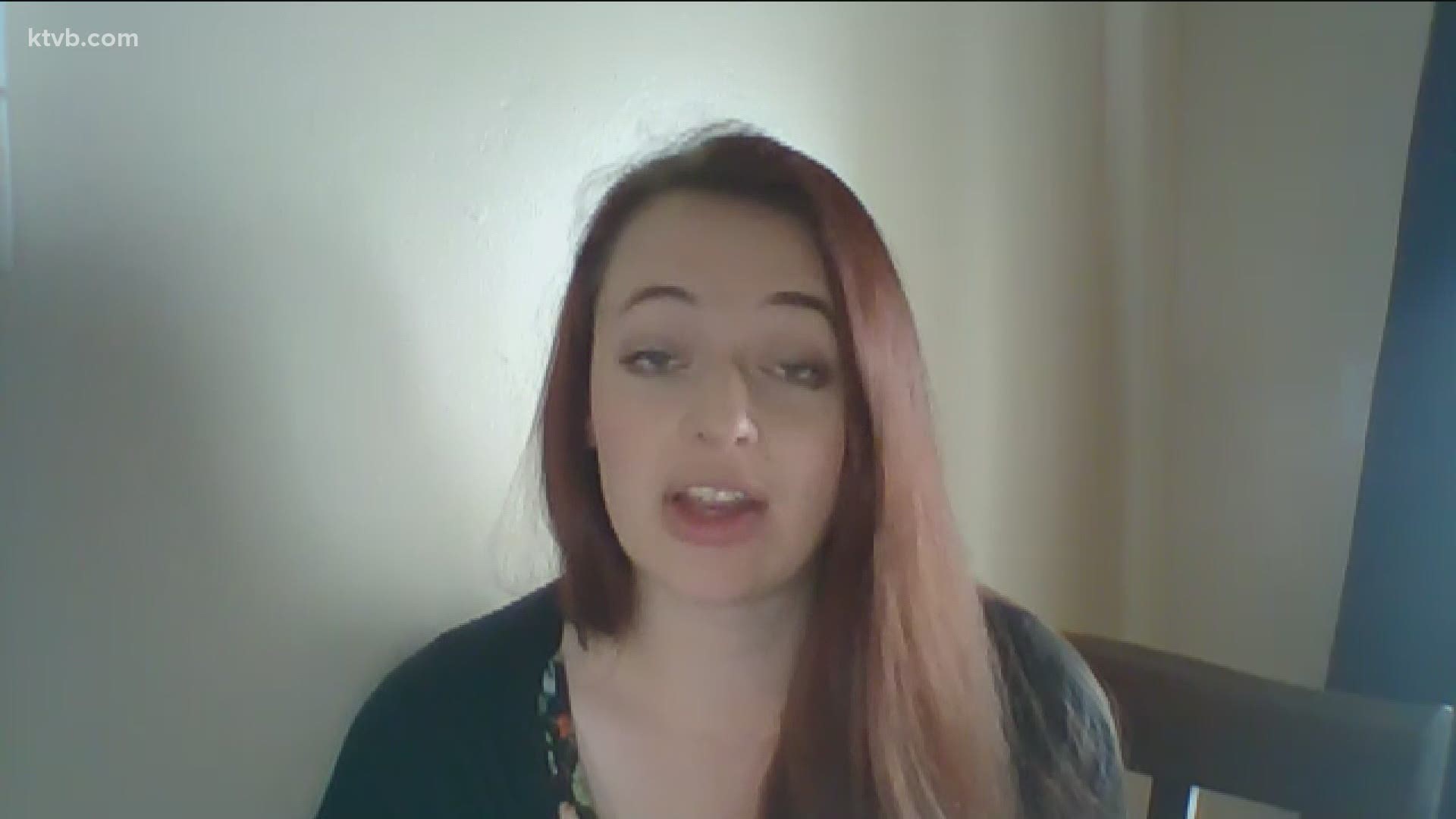BOISE, Idaho — Editor's Note: The video above was originally published on Nov. 4 and discusses how Idaho healthcare workers are preparing for flu season during a pandemic.
Four out of Idaho's six public health districts released a joint statement on Friday afternoon that explained the current state of the coronavirus pandemic in the Gem State. Officials explained that the current wave of new cases is creating a backlog of contact tracing, "making it impossible to contact all new reported cases or those individual's close-contacts."
One health official added somedays "our staff is struggling to just keep our heads above water."
On Thursday, the Gem State set a new record for the total number of cases reported for the third consecutive day with 1,316 confirmed and probable cases. The current wave of new COVID-19 cases started in mid-September and has exploded this week.
Eight more COVID-19-related deaths were also reported on Thursday, bringing the state's death toll from the pandemic to 673.
Within Central District Health (CDH), the public health district that oversees Ada, Elmore, Boise and Valley counties, school and long-term facility-related cases are prioritized for contact tracing and investigation. This week Ada County will likely report over 1,500 new cases, breaking its record for most cases reported in a single week, according to Friday's joint statement.
“Many people may get a positive test result and not hear back from the public health department as a result of so many cases coming in,” said Brandon Atkins with Central District Health.


“This really is a wake-up call to our community to say, that we are all feeling this punch in the gut, to community health and we really need the community to help us,” he said.
Russ Duke, district director for CDH, said people need to make fewer trips to the store, limit contact with people outside the household, make sure to wear a face mask and physically distance from others.
"These sacrifices are critical to getting back to a more manageable case rate for our communities and protecting our most vulnerable residents," he said.
Panhandle Health District in North Idaho is reporting over 100 new cases daily but the surge in cases isn't the only battle health officials there say they are waging.
"The District is in a difficult position and cannot sustainably have staff continue to work after-hours," the joint statement read. "This is compounded by a stressful work environment where the public is, at times, resistant to the District's help."
"We are able to report over 100 cases per day, but that is only what we are able to get into data entry," said Panhandle Health District spokesperson Katherine Hoyer. "Some days there may be double that amount of cases and our staff is struggling to just keep our heads above water. We want the public to have an accurate idea of what is occurring in our community while sustaining a modified case investigation."
South Central Public Health District (SCPHD), which oversees Blaine, Camas, Cassia, Gooding, Jerome, Lincoln, Minidoka and Twin Falls counties, reported three times more cases in October than any other month since the pandemic began in March.
According to the joint statement, SCPHD has reported 200 over cases a day since Nov. 2.
"Our actions have consequences. We need to focus on our common goals; keep people healthy, keep businesses and schools open, and keep our hospitals running," SCPHD director Melody Bowyer said in the statement. "To do that, we need to work together to bring our cases down."
“The health district is unable to reach every person that has COVID-19 and guide them through the steps that they need to take to keep from infecting other people,” Brianna Bodily with South Central Public Health District said.
This week, Southwest District Health (SWDH), which oversees Adams, Canyon, Gem, Owyhee, Payette and Washington counties, has averaged over 200 new cases reported each day, according to the statement.
"We desperately need the community's help to dial back the numbers," said Jaime Aanensen, the environmental and community health division administrator. "The investigations team is doing our very best to keep up with the demand, including working overtime, but with the drastic increase in positive cases in such a short time, we need the help of the public to try to keep the cases down."
As cases continue to soar, the backlogs won’t go away anytime soon. The four health districts are calling on Idahoans to take their own proactive measures to protect themselves and those around them.
“Our investigators cannot keep up, not even close, so every single day we fall further behind, there are more people that we are never going to be able to contact,” said Bodily.
Anyone awaiting a test result should:
- Stay home and monitor your health – stay away from others in your household whenever possible. Watch for fever, cough, shortness of breath or other symptoms of COVID-19. Symptoms may appear 2-14 days after exposure.
- Think about the people you have recently been around and in what environments.
- Answer the phone call from the health department if they are able to reach out to you.
- Helpful Resources
If you test positive you should:
- Stay home except to get medical care; do not visit public places.
- Take care of yourself – get rest, stay hydrated.
- Stay in touch with your doctor – seek care if you have any emergency warning signs or if you think it's an emergency.
- Contact those with whom you have had close contact with to let them know they may have been exposed to COVID-19.
- Avoid public transportation, ride-sharing or taxis.
- Helpful Resources

